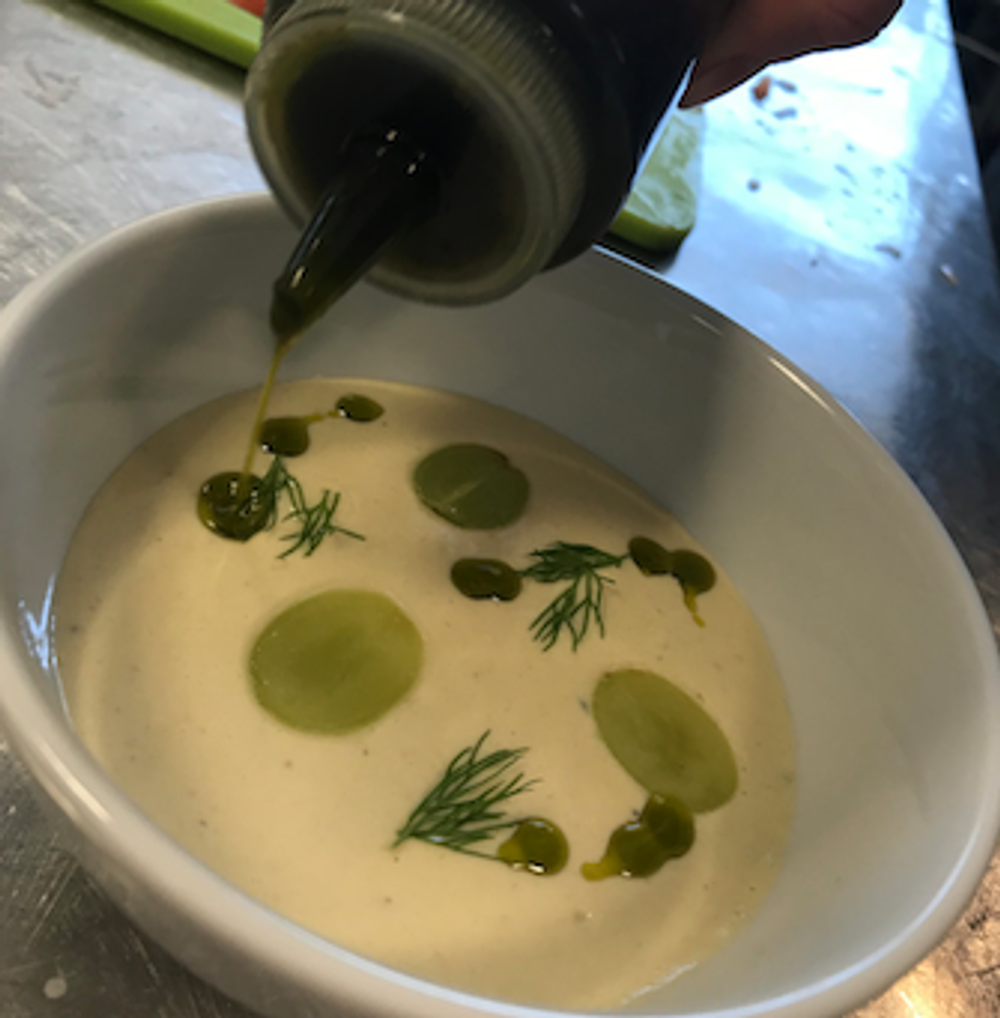The quality/ value equation, lower alcohol and its food-pairing abilities are three key reasons Vinho Verde should be on every wine list.
About this time last year I headed off to an event space on London’s Southbank for a Vinho Verde trade tasting. Not 100% why I was going to taste through what would surely be reams of slightly fizzy, acidic stuff and I wasn’t holding out much hope. But the PR team behind the event were (and still are) a good bunch and they sold it well. So off I went. Thus started my Vinho Verde re-education that had me coming out of there five hours later full of the joys of northern Portugal.

This year’s annual Vinho Verde tasting in London was held in Skyloft, Millbank
This year I was keen to head back and learn more. In for a penny, in for a pound, right? I got in touch with the PR team and told them I was keen to come along and to let me know the details as and when. I was a bit shocked (but very pleasantly so) that they asked if I could present some of the wines for the lunch they were holding for a few sommeliers and journalists. I said yes. Without thinking.

Varietal Vinho Verde is on the up
Problem was that as much as I am now a very keen learner and enthusiast about the wines of Vinho Verde, to stand in front of a room full of sommeliers and say “so I thought this goes well with this” without my voice cracking under the nerves was going to be a challenge. It was swotting-up time, so even if I didn’t do justice to the amazing food prepared by the equally amazing Three Girls Cook, I could at least WOW them all with my extensive knowledge and clearly brilliant mind.
It was only here that I realised the full scale of what Vinho Verde is about, and learning and retaining this info was a bigger challenge than I was appreciating.
As I said at the start of this piece, we all (the producers included) are fully aware of Vinho Verde’s reputation. A boom in the 1980s of the spritzy, low alcohol, green apple and lemon, Sunday-afternoon-in-the-backgarden wine changed the way the UK thought of Portuguese white wine, and also changed the landscape in Vinho Verde itself.

Yes, you do get red Vinho Verde
Until recently Vinho Verde produced as much red wine as it did white. OK, most of that red stayed in Portugal, but it was never a one trick pony. And it still isn’t, although vine-pulls and head-grafting have left red production across the region reduced to under 20% today, as white Vinho Verde seems to be what the world wants.
Where the last 20 years have progressed rather massively is the grape and region mix and confidence for 100% varietals. The rather excellently produced booklet that the Vinho Verde council have produced starts with the map of the sub regions, nine of them in all. And each of the sub regions is clearly linked with “this is what grows here”. Of the 47 different grape varieties allowed in Vinho Verde DO a handful do well in really separate sub-regions of Portugal’s largest wine region by area.
When you’re learning about wine a lot of it is working out what the climate’s like and what’ll grow there. These nine sub regions of Vinho Verde all have very distinct microclimates. Alvarinho naturally does well on the northern border with Spain in the sheltered hills of Monçao e Melgaço. Coastal regions that feed the river valleys of the Lima and Ave are cooler and suit the early ripening Loureiro and Trajadura. Inland regions like Baião, on the border with the Douro Valley region suit the late ripening and full bodied Azal and Avesso.
The top 3 things going for Vinho Verde
But you don’t really care about the ins and outs of stuff like that. You care about ‘how do I sell it to my punters?’. Well, there are lots of things going for the wines of Vinho Verde that’ll fit the wine drinkers of Britain. Here’s my top 3:
- First up, the wines of Vinho Verde fit the current drinking trends we’re seeing and hearing in the press every five seconds. People want lower alcohol wines. The most you’re going to get out of Vinho Verde are the 13%-ers from Alvarinho in the north, with most wines full fermented struggling to break 11.5%. No need for any of that reverse osmosis and sickly sweetening here thank you very much. The acidic structure of Vinho Verde pairs with all kinds of food

- In a nation of adventurous foodies, it’s a great option. The different varietal Vinho Verdes from the across the sub regions pair really well with a range of food, thanks to their acidic structure. Everything from seafood to pork, from herby to spicy. There’s a Vihno Verde for it.
- And also, as someone with Manx blood, there’s the price value. Well, Portugal in general is pretty immense for this, but if you’ve got a wine list with a load of mid-priced Sancerres and Bordeaux Blancs, a cheeky but classy Vinho Verde on the pages adds an option for the lower spenders whilst keeping you, as the wine geek of the piece, very happy to talk it through.
Do make sure you don’t dismiss these wines and what the winemakers are collectively trying to do. Some really interesting stuff to taste and talk through.
Cheers
If you want to find out more info on how to get involved with these wines, then please get in touch with Gonçalo Rowett at the Vinho Verde Wine Council
































